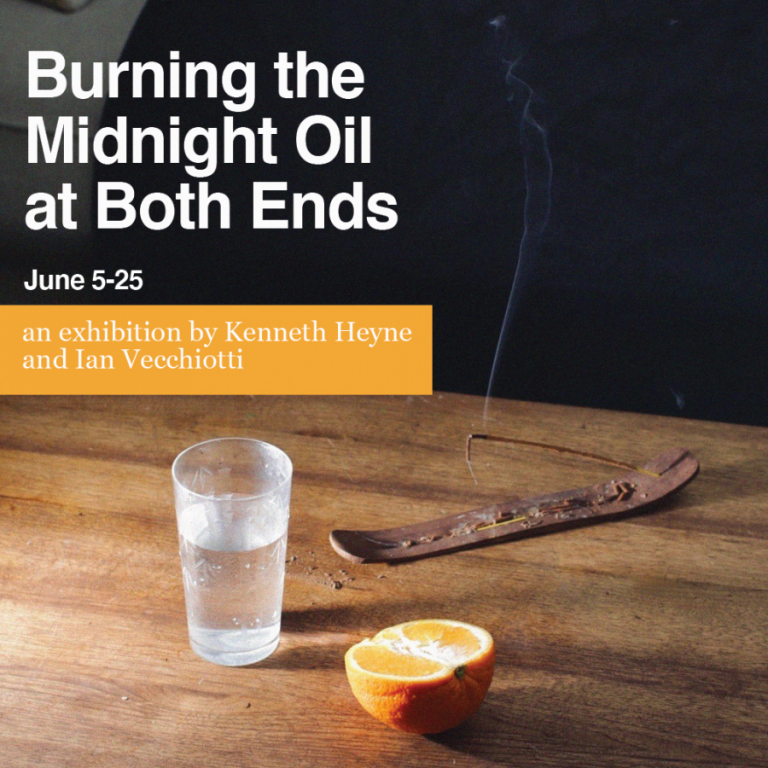Kenneth Heyne and Ian Vecchiotti: Burning the Midnight Oil at Both Ends
@ Belong Gallery
2712 W North Ave, Chicago, IL 60647
Opening Saturday, June 5th, from 7PM - 10PM
On view through Friday, June 25th
We spend our waking moments in spaces we’ve established by ourselves, led by an intuition to collaborate with the domestic–the product of nurture and trauma therein. As we sit our gaze comes upon the sun-bathed carpet, the chair askew, the table more littered than usual. These objects appear grounded; stagnant. Their positions are fixed, lest seized by spontaneous touch, as we beckon them to dance. In a quotidian upheaval potential energy is released, and stillness ensues again, post-climax.
“Burning the Midnight Oil at Both Ends,” sees its title and idea born out of conversations in lockdown. They centered around change, collage, and mixing up different sensibilities around the everyday. A year ago there was a real sense of isolation and burgeoning reform–we started thinking about the Kitsch Revolution as a parallel of current events. The show’s title is a malaphor; the combination of two figures of speech intertwined. It speaks to a manic kind of energy that the artists embody when it comes to creation.
Belong Gallery presents an exhibition of photographs by Ian Vecchiotti and new ceramics by Kenneth Heyne.
Adorning muted, paint-textured shelves and a centered electric-green table, Kenneth Heyne’s series of vessels compose a figurative garden. The viewer’s eyes swerve around their masses, circumnavigating about in order to discover their offerings. The vessels take on familiar shapes from the Greek and Etruscan ceramic tradition. Two of the works are reticulated to harbor a vessel inside of another. One of those internal pieces is a high-heeled shoe that doubles as a candle stick holder, created by artist friend Kimberly Kim. This practice of inception–putting an object inside of another–borrows from the Qianlong period in 18th Century China, in which it was the pinnacle of a rich craft tradition. Heyne’s application here suggests gestation or renewal. In a few of the objects, metallic gold lines mend haphazard cracks. The reparative technique known as the Japanese art of “Kintsugi.” What would conventionally be considered a “flaw,” instead critically draws our attention to their lustrous exteriors.
Attempting a precarious balancing act between absurdity and the macabre, Ian Vecchiotti’s photo works occupy a familiar but surreal space. Enthusiastic about the visual language of still life, but not interested in maintaining its conventions of subject-matter, Vecchiotti presents moments of fleeting familiarity. Objects are recognizable–relatable–but nonsensically placed, or perhaps floating in a sequence of impossibility. Objects represented are commonplace, as are the environments themselves–an act of borrowing from the most immediate locale; places we’ve been forced to relegate to for an extended period of time.
Official Website
More events on this date
Tags: Belong Gallery, Burning the Midnight Oil at Both Ends, Chicago, Humboldt Park, Ian Vecchiotti, Kenneth Heyne

« previous event
next event »